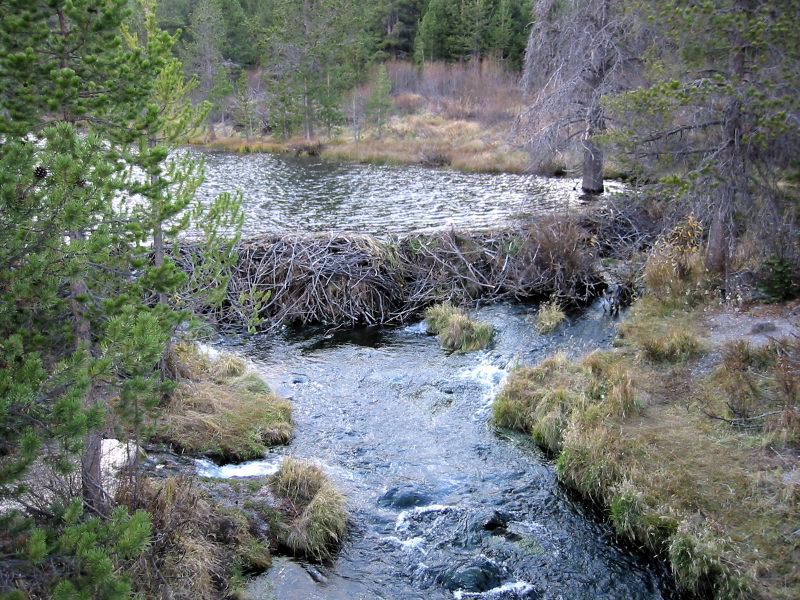Today’s Wall Street Journal ran a story about using beavers to raise the water table and rehabilitate natural areas. Beavers? How can beavers do this?
 Photo by Walter Siegmund
Photo by Walter Siegmund
Beaver dam of Hat Lake and Hat Creek in foreground. Bridge over Hat Creek on highway 89, Lassen Volcanic National Park. http://en.wikipedia.org/wiki/File:BeaverDam_8409.jpg
Beavers are rodents that live in and along streams and rivers. They gnaw down trees and build dams, which back up the rivers and streams. The standing water behind the dam can percolate into the ground, recharging the groundwater and raising the water table. The dams minimize flooding during the wet season and keep water from drying up during the dry season.
It’s especially important to recharge the groundwater in areas that don’t have precipitation throughout the year. As we draw water out of the ground for our own uses, the water table falls, so much so that natural watering holes dry up. One solution is for us to simply use less water during the dry seasons. Another solution for humans to build dams. Using less water is a good start (for as much as that is possible during the dry season), but we can also turn to natural sources–such as beavers–to recharge the water supply AND restore natural habitats.
“We can spend $200,000 putting wood into a stream, cabling down logs. Sometimes it works and sometimes it doesn’t. Put in a colony of beavers and it always works.”
-Celeste Coulter, stewardship director at the North Coast Land Conservancy, a Seaside, Oregon, group that urges developers to set aside land for beavers
Learn about the science behind groundwater recharge and the water table in the High-Adventure Science investigation, “Will there be enough fresh water?”.